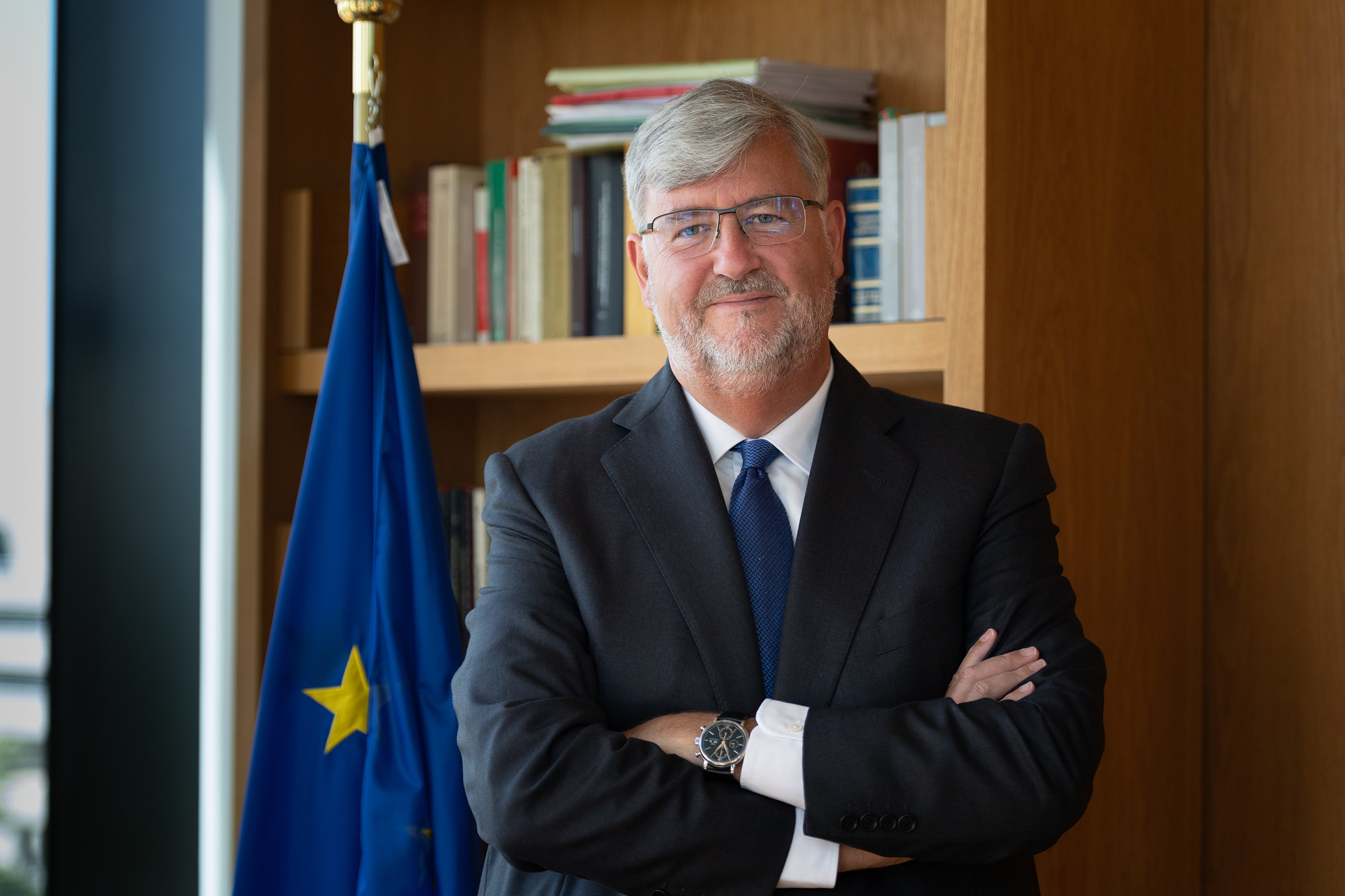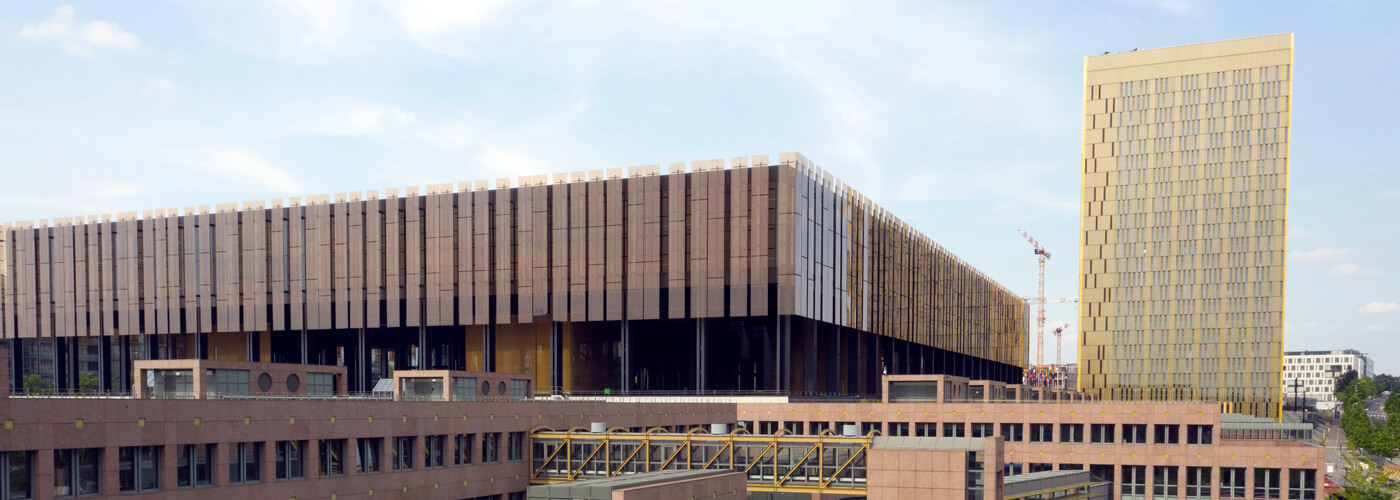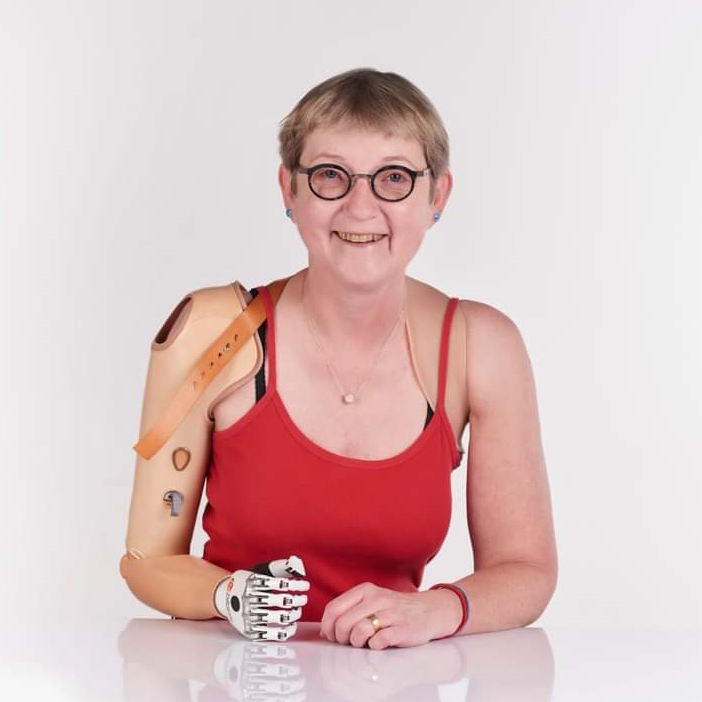A | Introduction by the Registrar
Throughout the year 2023, the Court of Justice of the European Union has resolutely pursued a path of transformation, not only to prepare for future challenges, but also to seize all the opportunities that lie ahead.

Alfredo Calot Escobar
Registrar of the Court of Justice
The Registrar of the Court of Justice, the Secretary-General of the Institution, oversees the administrative departments under the authority of the President.
Throughout the year 2023, the Court of Justice of the European Union has resolutely pursued a path of transformation, not only to prepare for future challenges, but also to seize all the opportunities that lie ahead.
In the judicial sphere, the legislative procedure on the partial transfer of preliminary rulings to the General Court took place throughout the year, with the political agreement being reached in December. In parallel, we have been working actively to ensure a smooth and seamless implementation of the reform when the time comes. This will be a defining moment in the history of our dialogue with national courts and an important step in our efforts to enhance further the efficiency of the judicial work at the Court.
Alongside the preparations for the transfer, the Court has focused its efforts on the effective and orderly integration of new technologies. As part of this process, we became the first EU institution to develop an artificial intelligence integration strategy, which included the establishment of an AI Management Board tasked with overseeing the ethical aspects of AI use within the Institution and setting clear boundaries for its application. The Board, composed of Members of the Court of Justice and the General Court, ensures that the technological choices made by the institution to integrate AI-based tools are both ethically sound and in line with the Court’s principles. To promote a culture of responsible and secure use of AI tools, one of the first steps taken by the Board was to issue staff guidelines on the use of AI.
In addition, AI tools are ready to be incorporated into our future case management system. This will not only enable the institution to make the most of cutting-edge technologies, but also set the stage for the creation of a horizontal and fully integrated system, designed to streamline our workflows and automate a wide range of repetitive actions. This holistic approach will further support, develop and harness the remarkable diversity of expertise within our staff, allowing us to devote more time to intellectually stimulating and value-adding tasks.
However, the past year has not been solely focused on laying the foundations for the future; it has also demonstrated our commitment to upholding the values upon which the Court was founded. And one of these values, ingrained in our institution since its inception, is that of diversity – diversity of cultures, languages and legal traditions.
Designed to celebrate the vibrant linguistic mosaic of our institution, the Garden of Multilingualism is now a symbol of the Court’s commitment to diversity and equality. However, the conditio sine qua non for achieving this diversity is the institution’s capability to attract talent from all Member States.
To this end, discussions at the interinstitutional level, focused on increasing the attractiveness of Luxembourg as a place to work, proceeded with great determination in 2023. Within this framework, the College of the Secretaries-General and Heads of Administration of the EU institutions and bodies based in Luxembourg adopted a series of pragmatic measures aimed at promoting Luxembourg as a place to work, facilitating the integration of newcomers and trainees and removing obstacles that might discourage citizens of all Member States from joining the EU institutions based in the Grand Duchy.
In its constant endeavour to achieve a fair geographical representation, the Court decided to launch pilot projects to raise awareness of the importance of geographical balance and to promote careers directly in the Member States. An excellent example of this was a visit to Latvia, where a delegation of Members and senior managers held productive discussions with representatives of, inter alia, the judiciary, government, academia and the media. The aim was to present the mission of the Court, promote career opportunities and support legal and linguistic training of relevance to the work of our institution.
2023 has therefore been marked by a strong adherence to the Court’s commitment to public service, while at the same time reimagining our potential. We have embarked on a journey to redefine not only how we operate, but also how we envision our future. A future in which our institution not only adapts to change, but drives it, with the same spirit of excellence, diversity, progress and dedication that has always been our hallmark.
B | Key events of the year
Celebrating multilingualism at the Court of Justice of the European Union
Multilingualism is a core value of the European project, as is enshrined in the Treaties. It is both the essential prerequisite for the transparency of the actions of the EU institutions and the applicability of EU law, and a sign of deep respect for national cultures and identities.
As a key component of proceedings before the Court of Justice of the European Union, multilingualism fulfils two fundamental democratic needs: it provides equal access to the Courts of the European Union and makes case-law accessible to all European citizens. The Institution’s language service translates documents and provides interpreting at hearings; as a result, the Court can work in the 24 official languages of the European Union and manage up to 552 language combinations on a daily basis. Those fully multilingual language arrangements are without parallel in any other court in the world. Implementing them is a constant operational challenge, and one which can be met only through the rigorous and effective management of the human and technical resources deployed.
A few years ago, the Court launched broad-based discussions to consider how to explain and promote multilingualism as it is practised within the Institution. This prompted a number of initiatives intended to raise awareness of the importance of multilingualism, especially in legal and academic spheres.
In 2023, 9 May (Europe Day) was the date chosen to inaugurate the Garden of Multilingualism, built on a parcel of land freed up by the demolition of a former administrative complex of the European Commission and located on the periphery of the Court’s grounds. Developed in partnership with the Luxembourg authorities, this new green space is dedicated to multilingualism. It is open to the public and intended to host cultural events. It also contributes to preserving biodiversity in urban environments by allowing biotopes to flourish, thanks to the diversity of the species to which it is home. Planted on the Kirchberg Plateau, the seat of many European institutions, the garden pays tribute to the linguistic diversity of the European Union, to its host State (Luxembourg) and to its time-honoured multilingualism.
This year also saw the publication of a three-volume work, translated into all the official EU languages, dedicated to multilingualism at the Court and throughout the European Union. The work explores the various aspects of the Institution’s language arrangements and how multilingualism is put into practice, with the help of the Court’s interpreting and legal translation services. Part two of the work, entitled ‘Multilingual postcards’, is a collection of contributions by well-known figures from the 27 Member States who are recognised individuals in their fields – judges, philosophers, philologists and politicians. Written in all the languages of the European Union, these postcards invite the reader to learn about the concepts and the challenges of multilingualism across Europe as a whole. Available to the general public from 2024, the publication is intended to be a basis for reflection and a source of inspiration for anyone interested in languages and the multilingual workings of the European Union. A conference then brought together the contributors to this work alongside members of the senior management at the Court and the other European institutions for a joint discussion on the subject of ‘High-quality multilingualism against the backdrop of accelerating technological progress’.

Accessibility and inclusion – a shared responsibility
The rights of people with disabilities and the prohibition on any form of discrimination are laid down in the Charter of Fundamental Rights of the European Union, the Treaties, the European Pillar of Social Rights and the United Nations Convention on the Rights of Persons with Disabilities, to which the European Union acceded in 2010 and which forms an integral component of EU law.
Respect for the principles of equality and non-discrimination have always been part of the Court’s values as an institution. However, some work still remains to make accessibility for and the inclusion of people with disabilities a truly ‘shared responsibility’. The Court thus launched an ambitious inter-departmental project, so that every individual could make a greater contribution to building an inclusive environment.
The measures taken and those planned for the future cover a very wide range of areas: the recruitment of and support for colleagues with disabilities and their helpers, the accessibility of the premises and digital and IT accessibility, as well as communications, awareness raising and training.
Most significantly, a clear framework has been established at the Court to provide its current staff and job applicants who have disabilities with the adjustments to make it easier for them to work and access employment within the Institution. Those adjustments may include, among other things, technical solutions, alterations to the working environment, support measures or the reorganisation of duties and working hours.
Next, several steps have been taken to optimise physical access to the Court’s premises – whether for the Institution’s staff, lawyers and agents, freelance interpreters and, more broadly, all visitors. The entrances to the Institution’s buildings have been remodelled and the evacuation procedure has been improved. Specific arrangements for the courtrooms are being reassessed. A longer-term action plan seeks to ensure that the buildings comply with the latest accessibility standards.
Enhanced digital and IT accessibility are for the benefit of both in-house staff and external users. The CVRIA website is being improved, in terms of its structure, functionalities and content, and accessibility for people with disabilities has been integrated by design – from its inception – into the future digital working environment at the Court. Lastly, the European Court Reports have been compliant with accessibility recommendations since 2021 and can be consulted using assistive technologies.
Finally, awareness-raising, information and training campaigns are regularly undertaken to promote not only inclusion, mutual respect and cooperation, but also support for people with disabilities and their helpers.
Katia Vermeire
Assistant in the Research and Documentation Directorate
‘From the launch of the Court’s drive to improve accessibility for people with disabilities and promote their inclusion, I volunteered to help out with the project because disabilities are still not given sufficient recognition in our homogenised world. This project is especially close to my heart. As a person with disabilities myself, I would like to share my lived experiences in order to help people in similar circumstances.
It is important to raise awareness amongst our fellow citizens and colleagues. Before becoming a person with reduced mobility myself, I had no idea of the struggles faced by people with disabilities and their helpers.
Let’s support each other! If we each play our part, we can build not only an accessible working environment but a fair one too.’

Artificial Intelligence: the strategy adopted for its use at the Court
For some years now, the Court has been tracking developments in the fields of artificial intelligence and emerging technologies with a view to identifying those technologies which could improve the efficiency of the Institution’s operations.
Since 2019, the Innovation Lab within the Information Technology Directorate has been supporting the Court in its digital transformation. In conjunction with the relevant departments, the Innovation Lab identifies, analyses and tests the functionalities and features of various tools. Going forward, those tools will be used in accordance with requirements of confidentiality, security and data protection. Since the Innovation Lab was established, some 30 ideas have been put forward, around 20 have been tested and some are already in place or in development.
In order to be able to exploit fully the promising functionalities offered by emerging technologies and to make preparations for their integration, in June 2023 the Court adopted its ‘Artificial Intelligence Strategy of the Court of Justice of the European Union’. When put to use, those tools must not only enable data to be controlled but also must ensure that fundamental rights and ethical principles are respected.
As the first of the European institutions to adopt such a strategy, and well in advance of the adoption of the proposal for European legislation on artificial intelligence (the ‘AI Act’), the Court has identified three main objectives:
-
improving the efficiency and the effectiveness of administrative and judicial processes;
-
improving the quality and the consistency of judicial decisions; and
-
improving access to justice and transparency for European citizens.
An ethics board, called the ‘A.I. Management Board (AIMB)’, has been set up and given the primary task of drawing up guidance for and establishing limits on the use of AI-based tools. The AIMB oversees the acquisition, development and use of such tools in keeping with the principles laid down in the strategy. Those principles include fairness, impartiality and non-discrimination, transparency, traceability, confidentiality of information, respect for privacy and personal data, human surveillance and continuous improvement.
Within that framework, the Court adopted guidelines for the use of AI-based tools in 2023.

Strengthening European judicial cooperation: the partnership with the European Judicial Training Network
Dialogue and cooperation with the national courts are at the heart of the Court’s mission. A concrete example of this cooperation is the relationship that has been established with the European Judicial Training Network (EJTN) for over 15 years. Founded in 2000 to support the creation of a European area of justice announced by the Tampere European Council (Finland), the Network is a key stakeholder in the training of professionals within the justice system, in particular national judges and public prosecutors. The Network brings together all of the European judicial training centres. To mark its commitment to its partnership with the Network, in 2023 the Court adopted a declaration entitled ‘Supporting the European Judicial Training Network’ to shape a sustainable European judicial culture’.
Supporting the European Judicial Training Network (EJTN) to shape a sustainable European judicial culture
For the past 70 years, the Court of Justice of the European Union (CJEU) has been committed to dialogue with national courts.
As an expression of this commitment, we have established a strong partnership with the EJTN. The latter is the main platform among the European judiciary for knowledge exchange in a wide range of areas, in particular EU law. The EJTN has been organising cross-border training activities for national justice professionals for over two decades, thus helping to improve knowledge of EU law.
Annual seminars, study visits, forums and the exchange of training material are part of the well-established cooperation between the EJTN and the CJEU. Since 2007, the EJTN and the CJEU have also been organising long-term training for national judges and prosecutors, who are invited to participate for 6 or 12 months in the judicial work of the cabinets of the Judges and Advocates General. This opportunity gives them a unique insight into the working methods of the CJEU and helps them significantly to broaden their knowledge of EU law and procedures.
This successful and long-standing partnership brings benefits on at least three different levels. At the national level, it helps justice professionals to carry out their national duties when they return to their home countries, with a much better understanding of their role in the application of EU law. Within the Court, the presence of national judges and prosecutors enriches the diversity of legal cultures, which has always been of paramount importance to the Institution. In a broader context, this type of cooperation helps to promote dialogue between European and national judges, thus ensuring the uniform application of EU law throughout Europe.
In order to strengthen this cooperation further, the CJEU will continue to count on the strong support of the European Parliament and the Council, in the framework of Regulation (EU) 2021/693 establishing the Justice Programme. It also counts on the support of the European Commission, which is in charge of implementing the Justice Programme through its Work Programme and has recognised the EJTN’s ‘unique role’ in judicial training in the EU in its European judicial training strategy for 2021-2024 (Communication COM(2020) 713).
Moreover, the CJEU attaches much importance to geographical balance in the organisation of long-term training for national judges and prosecutors and to the representation of all national legal cultures in that context. Therefore, it endeavours to support awareness-raising initiatives in all Member States and to reinforce its communication on long-term training at the CJEU. Those efforts, combined with those of the Member States and of the EJTN, should help to promote cooperation between the European and national judiciaries, highlighting the benefits it brings to all of them.
Maintaining a close relationship with national judges has been one of the hallmarks of the CJEU since its inception and its cooperation with the EJTN contributes significantly to this important mission. Strengthening this partnership is essential because its impact goes far beyond achieving better proficiency in EU law – it contributes to the development of a genuine European judicial culture and to a healthy esprit de corps among European judges, at both EU and national level.
The Court and the Network have therefore chosen to launch new projects to strengthen their cooperation, in particular by increasing the number of national judges who can undertake a long-term internship at the Court. To that end, two series of measures are planned. The aim of the first is to raise awareness amongst professionals within the justice systems of the Member States about the possibility of long-term internships at the Court to attract more applicants. The goal of the second is to overcome any language barriers to those internships, by providing the EJTN with the language training expertise and teaching materials developed by the Court.
Ingrid Derveaux
EJTN Secretary General
‘The EJTN is committed to promoting the crucial dialogue between the Court and the national courts, which are also ‘ordinary courts of the European Union’. We are pleased that the Court is supporting those efforts by launching a number of projects intended to encourage judges in the EU Member States to sign up for the internship programme at the Court. We hope that 2024 will be another year in which this essential and fruitful cooperation is strengthened!’
Diana-Daniela Popel
Judge interning in the Chambers of Judge Ineta Ziemele
‘The internship at the Court has been a fantastic opportunity for me to learn more about how the Institution functions, to consolidate my knowledge of EU law by giving me the chance to get involved in the day-to-day work of the Court, and to get to know some extraordinary legal professionals. In view – in particular – of the special role played by the national courts in the implementation of EU law, I can only strongly recommend this internship to any judge working in the national courts and tribunals of the Member States who are keen to have an extremely fulfilling experience, both professionally and personally. I would like to thank all the members of the Chambers for their very warm welcome and their support, not forgetting the EJTN team!’











